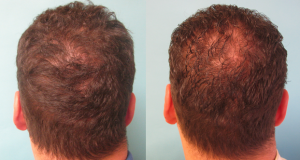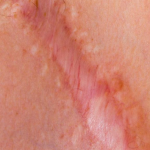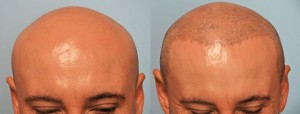Scalp MicroPigmentation is one of the newest non-surgical procedure which allows patients to improve the appearance of balding areas by the use of dermal pigments. This procedure can be done without the use of any anesthetics. The doctor performing the procedure is required to carefully match the dermal pigment with the color of the patient’s hair. After making the match the pigments will then be superficially introduced into the skin decreasing the level of pain and minimizing the risk of the pigments spreading.

Left: Before SMP; Right: After SMP
The only disadvantage that this procedure has is that patients need to have touch up once every few years as the color will fade away. In order to know if you are a candidate for the procedure and how many sessions you would require, you would need to call a doctor offering this service to schedule a consultation appointment.



 Scarring is the result of tissue fibers replacing normal skin after a trauma. Scarring can result from surgery, burns, open wounds, or any other abrasion of the skin. Scars are caused when the deep thick layer of skin, also known as the dermis, is damaged. Once trauma occurs, the body forms a collagen fiber which aids in the healing process of the wound and causes a scar. Because the tissue is a different consistency and quality the scar becomes visible.
Scarring is the result of tissue fibers replacing normal skin after a trauma. Scarring can result from surgery, burns, open wounds, or any other abrasion of the skin. Scars are caused when the deep thick layer of skin, also known as the dermis, is damaged. Once trauma occurs, the body forms a collagen fiber which aids in the healing process of the wound and causes a scar. Because the tissue is a different consistency and quality the scar becomes visible.